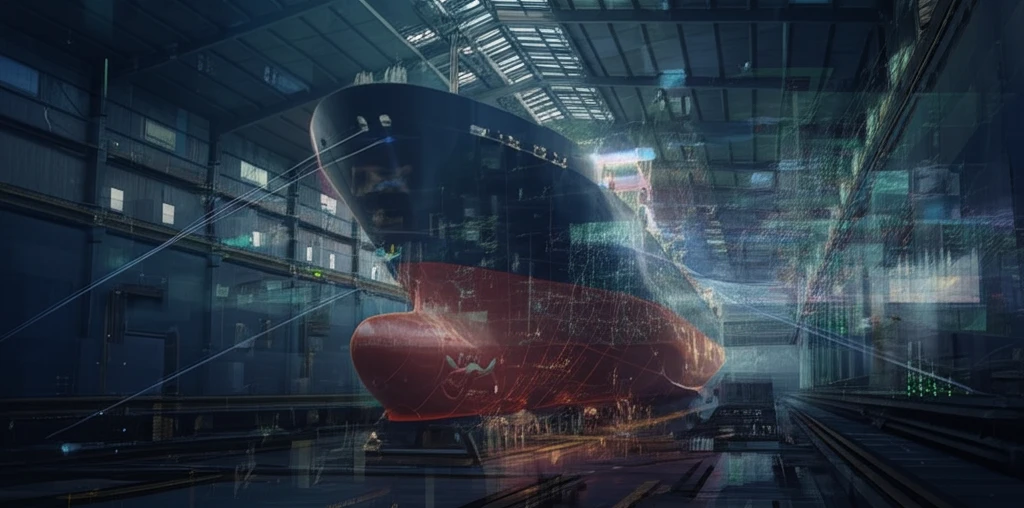
Smooth Sailing Ahead: How Simulation and Reverse Engineering are Revolutionizing Ship Retrofitting
"Discover how cutting-edge simulation tools and reverse engineering technologies are making ship retrofitting more efficient, cost-effective, and environmentally friendly, ensuring smoother operations for years to come."
The maritime industry is under constant pressure to evolve. Growing environmental concerns, stricter regulations from classification societies, and the relentless march of technological advancement mean ship owners must regularly retrofit their vessels. Retrofitting, the process of updating older ships with new technologies and systems, is no longer a matter of choice but a necessity for staying competitive and compliant.
However, retrofitting is a complex undertaking, fraught with challenges. Unexpected delays, cost overruns, and the need for extensive re-planning are common pitfalls. A significant hurdle is the often limited or unreliable information available for older ships. Original design documents may be missing, outdated, or inaccurate due to undocumented modifications over the years. This lack of precise data can lead to significant rework during the retrofitting process, inflating costs and extending downtime.
Fortunately, innovative solutions are emerging to tackle these challenges. Simulation tools and reverse engineering technologies are revolutionizing the way ship retrofits are planned and executed, offering a pathway to greater efficiency, accuracy, and ultimately, a smoother, more profitable journey for ship owners.
Simulation and Reverse Engineering: A Powerful Partnership

Imagine being able to test different retrofit scenarios virtually, predicting potential problems and optimizing the process before a single wrench is turned. That's the power of simulation. By creating a digital twin of the ship, engineers can model the impact of various upgrades, assess the performance of new equipment, and fine-tune the entire retrofitting plan in a virtual environment. This minimizes surprises, reduces risks, and ensures a more streamlined execution.
- Accurate Assessment: Laser scanning creates precise 3D models of existing structures, overcoming the challenge of missing or outdated documentation.
- Virtual Testing: Simulation tools allow engineers to test different retrofit scenarios, predicting potential issues and optimizing the plan before physical work begins.
- Informed Decisions: By analyzing simulation results, ship owners can make data-driven decisions about the most effective and cost-efficient upgrades.
- Reduced Downtime: Efficient planning and execution minimize delays, getting ships back in operation faster.
Looking Ahead: A Future of Efficient and Sustainable Shipping
The integration of simulation tools and reverse engineering technologies marks a significant step forward in the maritime industry. By embracing these innovations, ship owners can navigate the complexities of retrofitting with greater confidence, ensuring their vessels are not only compliant and competitive but also more efficient and environmentally sustainable. As these technologies continue to evolve, the future of ship retrofitting promises to be smoother, smarter, and greener, benefiting both the industry and the planet.
